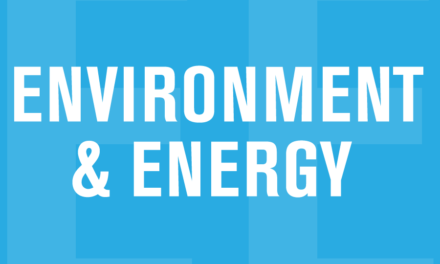Accompanied by much damning with faint praise, the Trudeau government’s climate change legislation passed third reading in the House of Commons last week. A few minutes after midnight on June 23 – just ahead of the first record-breaking heat wave of the summer – the Canadian Net-Zero Emissions Accountability Act was approved by a vote of 204 to 114. Then it was off to the Senate where the committee assigned to conduct a pre-study had already concluded that the incoming Bill C-12 is “weak and will not lead to actual reductions of GHGs.”
Flaccid as the act is, the Conservative MPs in the House of Commons handed the Liberals a gift by voting against it. They claimed to support the principle of accountability, but couldn’t vote for the bill because the advisory committee it established had a member or two who dared advocate the phasing out of fossil fuels. So if there is a summer election, Bill C-12, inadequate as it is, will at least position the Liberals as better on climate change than their main rivals.
The resigned tone of critics from the NDP, Bloc and Greens, reluctant supporters of the bill , spoke most pointedly to the flaws in the legislation.
The NDP’s Taylor Bachrach lamented that C-12 merely outlines a system for tracking action “but is not action itself, and concerted action carried out with the urgency this moment demands has been the missing ingredient in Canada for the past 30 years or more.” Paul Manly of the Green Party noted that just over two years to the day the House voted to declare a climate emergency, members were dealing with C-12 “a bill so hollow it appeared to be an attempt to fool the Canadian public into believing that real action was going to be taken on the climate crisis.” The Bloc’s critic, Monique Pauze, noted the absence of any plan to reduce emissions from oil and gas production, source of 28 percent of the country greenhouse gasses.
Deja vu
The most regrettable aspect of C-12 is how it graphically illustrates Canada’s lack of action on climate change over the years. It was 14 years ago that the House of Commons passed very similar legislation. The Climate Change Accountability Act was a private member’s bill sponsored by NDP Leader Jack Layton. Approved by the House in 2007, it died in the Senate the following year.
Although less detailed, its main provisions were remarkably similar to C-12. Instead of net-zero by 2050, the 2007 bill called for 80 per cent below 1990 levels by that year, with an interim goal of 25 percent below by 2020. That equates to about 450 million tons (mt) in 2020 and 120 mt in 2050. Like C-12, the earlier bill prescribed targets to be set at five-year intervals, but called for closer independent scrutiny than C-12 does, with the Environment Commissioner to review progress annually.
When the Layton bill passed in 2007 Canada’s greenhouse gas emissions were around 750mt. In 2019, despite improvements in energy efficiency, sharp reductions in coal-generated electricity, expansion of carbon pricing and subsidies too many to name, emissions in 2019 stood at 730mt, some 280mt higher than envisaged by the bill passed in 2007.
Clearly government policies have failed so far. Only economic disruptions caused by the 2008 financial crisis and the 2020 pandemic have brought about even moderate reductions in emissions. The 2008 drop was short-lived, with emissions growing from 694 to 730 from 2009 to 2019. The government would have us believe that this time will be different. Let’s take a closer look.
Targets and plans
Projections published by Environment and Climate Change Canada (ECCC) forecast that emissions for 2020 are down 12.7 per cent, to 637mt. The estimated decrease for Canada by is greater than that projected for both the U.S. (10.0 percent) and the U.K. (9.0 percent) for the pandemic year, but let’s take ECCC’s word for it.
ECCC projects that under plans in effect as of September 2020 there would have been an increase to 674mt by 2030 as the economy recovered. However, additional measures were announced last December in a document entitled “Healthy Environment and a Healthy Economy.” The plan, consisting mainly of a gradual increase in the carbon price from $50 to $170 a ton, is supposed to reduce emissions to 503mt by 2030. That would be a 31 percent reduction from 2005, pushing Canada slightly past the percentage reduction first committed to by the Harper government and continued by the Liberals at the 2015 Paris conference.
Getting to 503 means cutting emissions by 197mt from 2018 levels over the next 8-plus years, including:
| Cut mt | Cut % | |
| Oil and gas | 55mt | 28% |
| Electricity | 53mt | 85% |
| Transport | 35mt | 19% |
| Buildings | 27mt | 29% |
Source: ECCC projections 2020
Achieving the reductions shown in the table would be daunting, given our past record. That such cuts can be achieved through a carbon price topping out at $170 a ton, combined with a continuation of subsidy and incentive policies that have failed in the past looks like wishful thinking. As Seth Klein has written, tough regulatory measures are required to get the needed reductions, especially in the transportation and oil and gas sectors.
And while necessary, should such hard won reductions to 503 mt be achieved, they would not be sufficient. As the UN panel on climate change has pointed out (and as the changing climate is emphasizing) a measured stroll to net zero in 2050 is not an option. Emissions must be cut in half by 2030, a target that based on current half-baked plans leaves Canada some 140mt shy of appearing to do its part to fight climate change.
Such foot-dragging is not a good look going into the possibility of an election campaign and the certainty of the next big international climate change gathering – COP26 in Scotland in November – when countries are expected to announce new, more ambitious targets. Thus, we have seen Canada’s targets evolve quickly upward.
First, the April budget announced a suite of subsidies and incentives, including “deep home retrofits” and a Net Zero Accelerator to “help even more companies invest to reduce pollution, while growing their businesses.” Those subsidies are supposed to reduce emissions by another 35 mt. The budget announcement was upstaged a couple of days later when, following President Joe Biden’s climate summit, the Prime Minister committed to reductions of 40 to 45 per cent, which would cut an additional 30 to 66mt, reducing Canada’s emissions to 402 mt in 2030. Trudeau didn’t say how that would be achieved.
How Bill C-12 fits into all of this is fuzzy. The 2030 target is not spelled out in the legislation – the target is defined as “Canada’s nationally determined contribution for that year, communicated under the Paris Agreement, as amended from time to time.” So whether the target is 30, 36, 40 or 45 percent below 2030 is To Be Announced. Once the target is revealed, the government has six months after the Accountability Act comes into force to establish an emissions reduction plan, and until the end of 2023 to prepare a progress report on how that plan is working. Climate emergency, what climate emergency?
Bill C-12 will do little to fight climate change, but it will be politically convenient for the Liberals, at least in the short run. Small wonder its supporters are not even lukewarm. As Quebec New Democrat Alexandre Boulerice said in the closing hours of debate: “The government has targets but its plan is incoherent, illogical and dubious.” Better than nothing? You decide.
-30-






